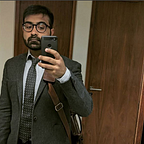Post-Terror Responses are now Gamified
This morning, in the aftermath of yesterday’s terror attacks outside the Houses of Parliament, an image has been circulating social media websites. It’s a picture of a service information sign in the London underground, that reads “THIS IS LONDON” — a well meaning message of solidarity in a city undoubtedly shaken. The image has been produced and reproduced thousands of times, and gatherings tens of thousands of likes, retweets and shares.
But, (and you knew where this was going) it’s fake, and had been created by a well-known image generator. At the time of writing, the image is still being retweeted and posted onto Facebook.
I was 11 when the 2005 London terror attacks happened, and while the bombings took place in the morning, my friends and I hadn’t heard about any of it until school was out. Back then, social media wasn’t a thing, most information came from the news, and grief was largely a private affair. My first encounter with post-terror attack reaction happened the following day when selling newspapers in my parent’s shop. Even then, most responses were muddled and confused,largely asking ‘why’ someone “would do something like this”.
I think about this every time a terror attack in a Western European capital occurs and immediately trends on Twitter.
If the most noticeable sign of post-terror attacks happening before we were all glued to our phones was hushed silences and tutting at BBC News, then today’s must be the instantaneous creation, reproduction and distribution of viral memes across the internet.
Here’s how things largely play out : A police incident is reported by a news organisation. It’s then retweeted thousands of times, mainly by journalists but also well meaning social media users. Moments later, it’s pounded on by the various factions of alt-right twitter — the types who’ll retweet the news with subtext suggesting the UK is about to become a Sharia state, or that this vindicates Donald Trump/Brexit/whatever else. Popular right wing accounts, the fastest adopters of this weird Twitter game, then go on to create and reproduce anti-immigrant, anti-Muslim and anti-refugee memes that circulate right wing message boards, and the cycle continues.
In response to this, liberal factions of Twitter (and I’m also guilty of this), will quote tweet them in an attempt to call out racism, Islamophobia or to put out well meaning messages about not jumping to conclusions. The cycle repeats itself for a few days, before all the factions pipe down, awaiting the next major incident.
For anyone who uses Twitter for more than an hour a day, all of this is obvious. In the face of tragic events, rather than showing a quiet concern, many of us retreat to our ideological factions online.
At the same time, nearly everyone who relies on social media platforms to follow a terror attack in real time also becomes involved in the same sort of game- largely orchestrated by the right- but also a product of how major news organisations report terror attacks.
The most sinister of these games focuses on the speculation of the attackers race, country of origin, or-you guessed it- whether they’re a Muslim or not. And those games are entertained by large, established legitimate news organisations like the Daily Mail. Yesterday, the paper, which was named ‘Newspaper of the Year’ just a few weeks ago, posted a story minutes after the Westminster attacks citing an eye witness who called one of the attackers “An Asian looking man”. The article, despite not being verified, was later tweeted and reproduced by Infowars’ Paul Joseph Watson, who have over half a million followers on his Twitter account. Just as sinister was the retweeting of a photograph taken by the Associated Press of a Muslim woman in a headscarf on her phone walking past, as emergency services attempted to revive a victim. We do not know who this woman was, or what she was doing — but the image has since gone viral across right wing social media, and reproduced by figures like Milo Yiannopolous, complete with his own watermarked logo.
Responding to terror attacks — especially ones in your own country- is always a daunting process. Before social media, our conversations would largely focus on the fear that comes with not having enough information to figure out what’s going on. Twitter and Facebook should have solved this, but if anything, yesterday showed the opposite. It’s not the case that too much information about tragic events exists — on the contrary, there is much we still don’t know, and the police still conduct investigations in largely the same way.
The real problem is what happens on social media during the times when we don’t know things. When those moments of confusion are filled with ideologically laced memes reinforcing our beliefs and values, regardless of how accurate they are. Worse, are those who capitalise from acts of terror under the guise of humanitarian concern — right wing news outlets who send out former EDL leader Tommy Robinson to make a viral video, or British commentators going on US talk shows to tell the world that London has been shut down and living in fear — things they undoubtedly know isn’t true.
If yesterday’s attacks told us anything about social media, it’s that rather than providing the information required for individuals to stay safe and well informed, it instead encourages the creation of content that caters to the very worst of our narcissistic tendencies.
